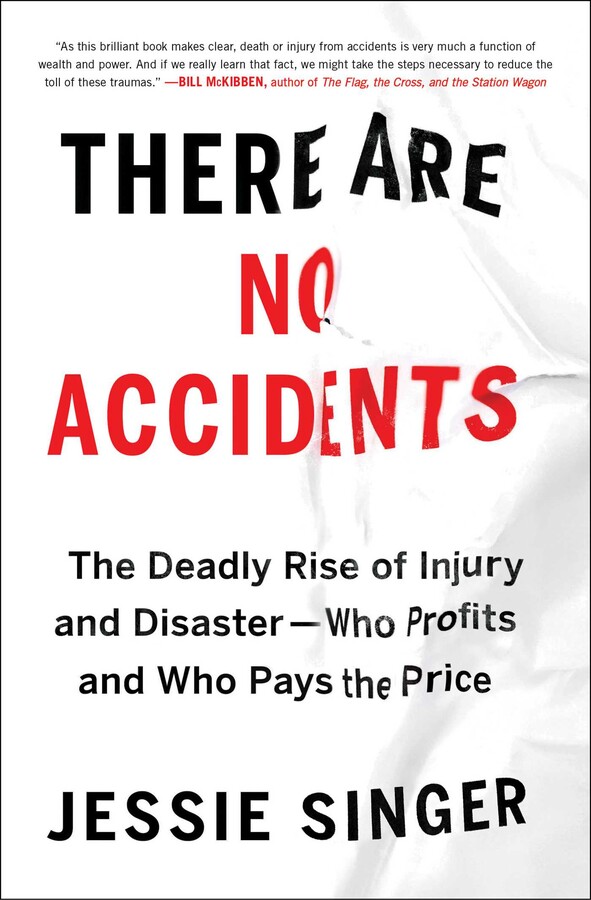There Are No Accidents looks at a wider range of fatalities that have been chalked up, at various times in the past century, as accidents or mere flukes: not just car crashes but also toxic chemical spills, catastrophic mine explosions, collapsed bridges, the Boeing 737 Max plane crashes, opioid overdoses, and more. In chapter after chapter, Singer makes the case that we should think of accidents not as “chance mishaps but systemic inevitabilities.” The stories she tells share a theme: that in the U.S. whether a person’s death is deemed an accident or not is largely a measure of that person’s proximity to power. The “power to demand that your workplace is safe, the power to fireproof your home, the power to drive instead of walk” all lower the risk of so-called accidental death. Because accidents, she argues, often provide cover for flaws in infrastructure, systemic racism, ableism, and a host of other ills.
The vogue for declaring certain categories of death “accidents” is older than we may think. “From the Industrial Revolution onward, powerful corporate interests insisted that fallible people were the source of all accidents,” Singer writes. Railroads provided some of the earliest data for accidental worker deaths; almost half of those injured or killed on the job were workers who connected train cars. Many were dismissed as “careless, drunk, or dumb.” When newspapers began reporting on the death toll of railroad workers (recorded at 11,000 in 1892), Congress took note and passed the Safety Appliance Act. The act mandated automatic couplers, saving workers the trouble of standing between two railcars and jeopardizing their lives. The number of lives lost to coupling train cars dropped by thousands in subsequent years. The problem was not individual reckless workers but an unsafe system.
By the time something manifests as an accident, a row of dominoes has already been set in motion. Singer’s favored metaphor for the onset of accidents is a stack of Swiss cheese. Each layer of cheese is supposed to add a slice of safety; it is supposed to cover the holes in previous layers, even as it brings its own holes. In cars, airbags, seat belts, sun visors, padded dashboards, and recessed steering wheels (less likely to impale drivers in a collision) are each meant to add a layer of protection; similarly, fire sprinklers, fire extinguishers, and fire escapes in buildings all lower the chances of someone dying in a fire. An accident, in this schema, is what happens when the holes in several layers of cheese line up perfectly: an aperture of atrocity.
